AISTATS 2026 will be in Morocco!
30.07.2025 08:07 — 👍 33 🔁 11 💬 0 📌 0Mathieu Dagréou
@matdag.bsky.social
Postdoc at Inria working on optimization and machine learning. Website: https://matdag.github.io/
@matdag.bsky.social
Postdoc at Inria working on optimization and machine learning. Website: https://matdag.github.io/
AISTATS 2026 will be in Morocco!
30.07.2025 08:07 — 👍 33 🔁 11 💬 0 📌 0
Tired of lengthy computations to derive scaling laws? This post is made for you: discover the sharpness of the z-transform!
francisbach.com/z-transform/
❓ How long does SGD take to reach the global minimum on non-convex functions?
With W. Azizian, J. Malick, P. Mertikopoulos, we tackle this fundamental question in our new ICML 2025 paper: "The Global Convergence Time of Stochastic Gradient Descent in Non-Convex Landscapes"
New paper on the generalization of Flow Matching www.arxiv.org/abs/2506.03719
🤯 Why does flow matching generalize? Did you know that the flow matching target you're trying to learn *can only generate training points*?
w @quentinbertrand.bsky.social @annegnx.bsky.social @remiemonet.bsky.social 👇👇👇

Register at PAISS 1-5 Sept 2025 @inria_grenoble with very talented speakers this year 🙂
paiss.inria.fr
cc @mvladimirova.bsky.social
🎉🎉🎉Our paper "Inexact subgradient methods for semialgebraic
functions" is accepted at Mathematical Programming !! This is a joint work with Jerome Bolte, Eric Moulines and Edouard Pauwels where we study a subgradient method with errors for nonconvex nonsmooth functions.
arxiv.org/pdf/2404.19517

I have cleaned a bit my lecture notes on Optimal Transport for Machine Learners arxiv.org/abs/2505.06589
13.05.2025 05:18 — 👍 120 🔁 29 💬 0 📌 0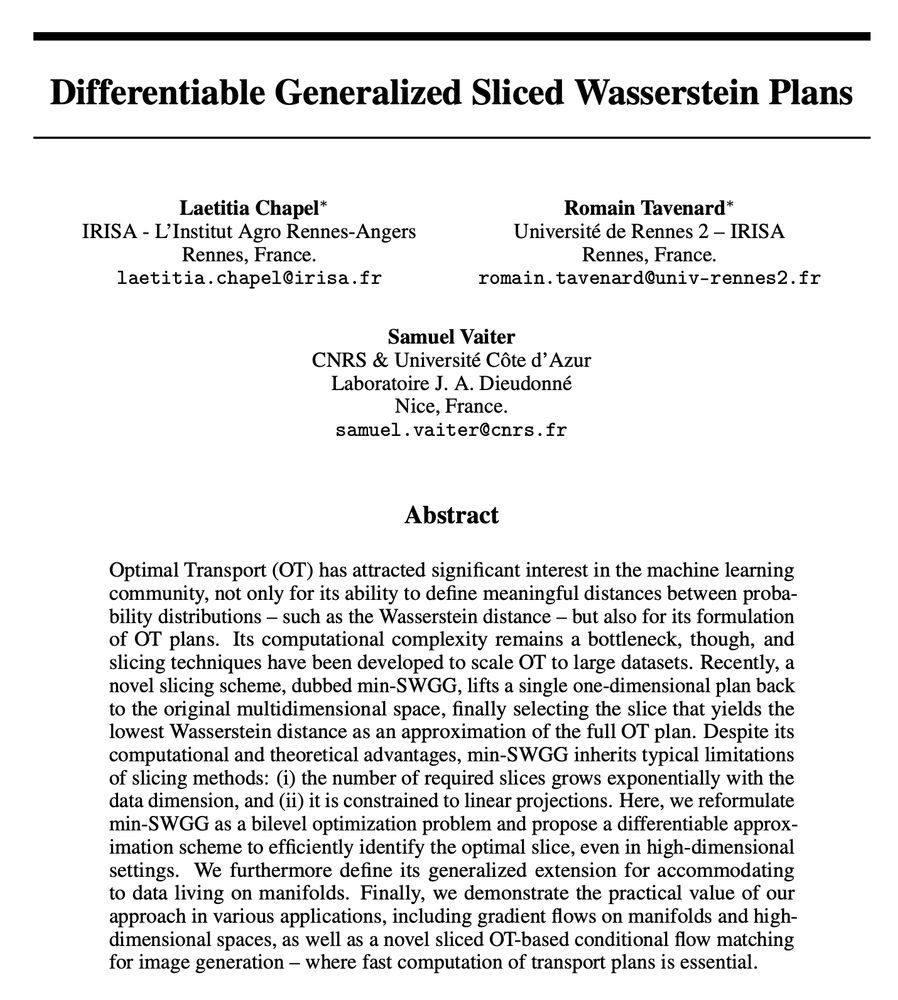
📣 New preprint 📣
**Differentiable Generalized Sliced Wasserstein Plans**
w/
L. Chapel
@rtavenar.bsky.social
We propose a Generalized Sliced Wasserstein method that provides an approximated transport plan and which admits a differentiable approximation.
arxiv.org/abs/2505.22049 1/5
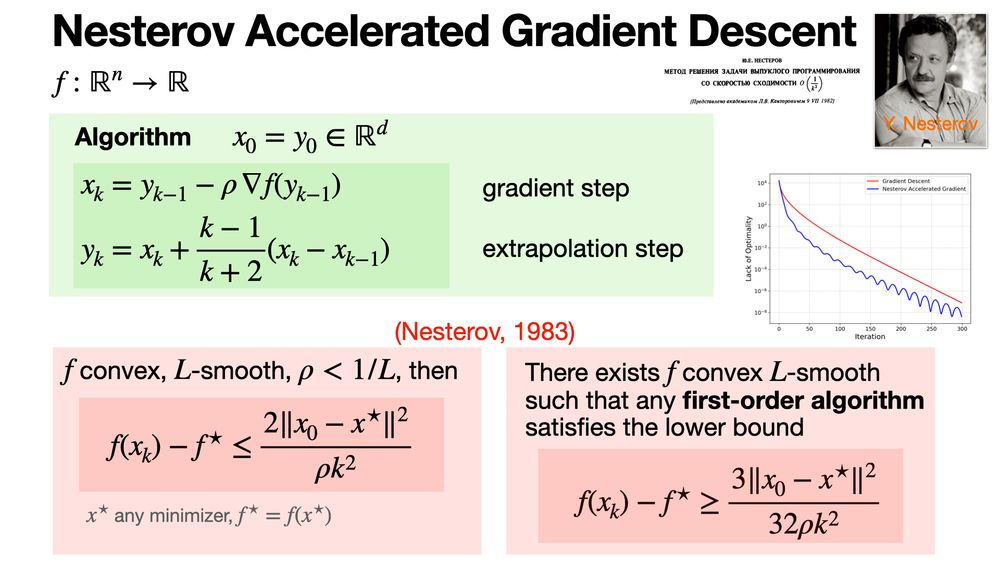
The Nesterov Accelerated Gradient (NAG) algorithm refines gradient descent by using an extrapolation step before computing the gradient. It leads to faster convergence for smooth convex functions, achieving the optimal rate of O(1/k^2). www.mathnet.ru/links/ceedfb...
25.04.2025 05:01 — 👍 17 🔁 3 💬 0 📌 0
Our paper
**Geometric and computational hardness of bilevel programming**
w/ Jerôme Bolte, Tùng Lê & Edouard Pauwels
has been accepted to Mathematical Programming!
We study how difficult it may be to solve bilevel optimization beyond strongly convex inner problems
arxiv.org/abs/2407.12372
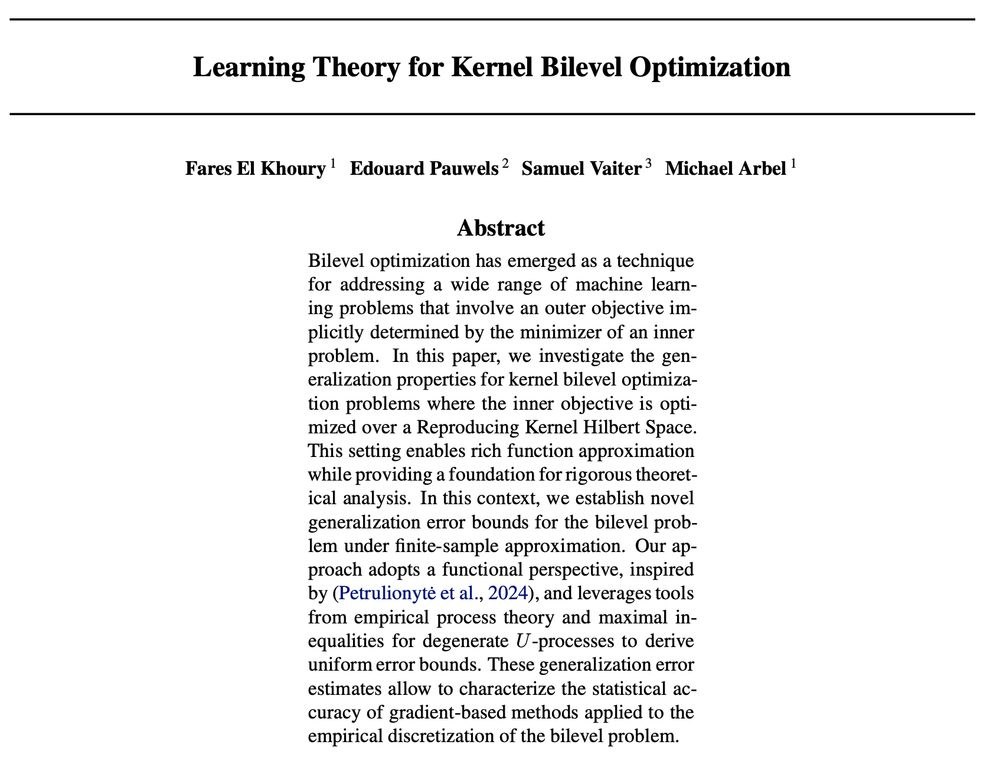
📣 New preprint 📣
Learning Theory for Kernel Bilevel Optimization
w/ @fareselkhoury.bsky.social E. Pauwels @michael-arbel.bsky.social
We provide generalization error bounds for bilevel optimization problems where the inner objective is minimized over a RKHS.
arxiv.org/abs/2502.08457
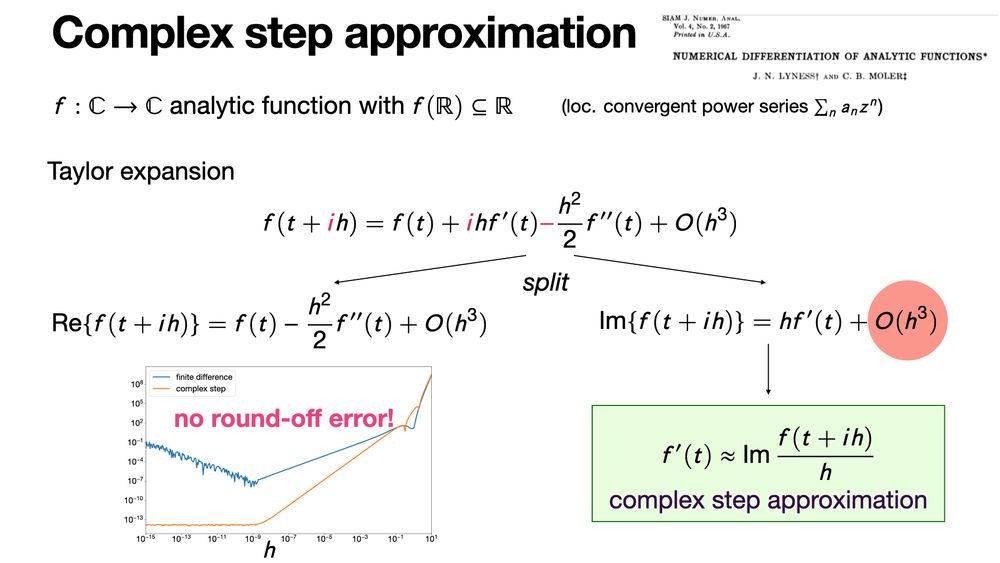
Complex step approximation is a numerical method to approximate the derivative from a single function evaluation using complex arithmetic. It is some kind of “poor man” automatic differentiation. https://nhigham.com/2020/10/06/what-is-the-complex-step-approximation/
17.02.2025 06:00 — 👍 24 🔁 4 💬 2 📌 1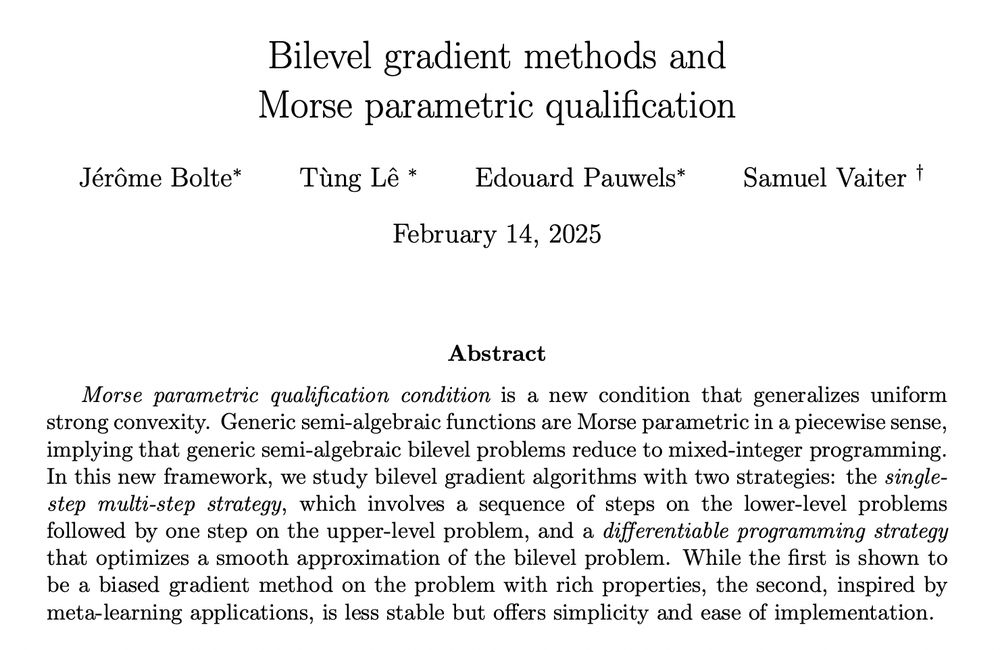
Screenshot of the abstract of the paper
📢 New preprint 📢
Bilevel gradient methods and Morse parametric qualification
w/ J. Bolte, T. Lê, E. Pauwels
We study bilevel optimization with a nonconvex inner objective. To do so, we propose a new setting (Morse parametric qualification) to study bilevel algorithms.
arxiv.org/abs/2502.09074
My rant of the day: You can be rejected from an MSCA postdoctoral fellowship despite scoring almost the maximum in every category and receiving virtually no negative feedback. Before I explain why this is disastrous (assuming it is a common issue), a few comments.
10.02.2025 07:28 — 👍 18 🔁 6 💬 1 📌 0
Excited to share Soup-of-Experts, a new neural network architecture that, for any given specific task, can instantiate in a flash a small model that is very good on it.
Made with ❤️ at Apple
Thanks to my co-authors David Grangier, Angelos Katharopoulos, and Skyler Seto!
arxiv.org/abs/2502.01804

Learning rate schedules seem mysterious? Why is the loss going down so fast during cooldown?
Turns out that this behaviour can be described with a bound from *convex, nonsmooth* optimization.
A short thread on our latest paper 🚞
arxiv.org/abs/2501.18965
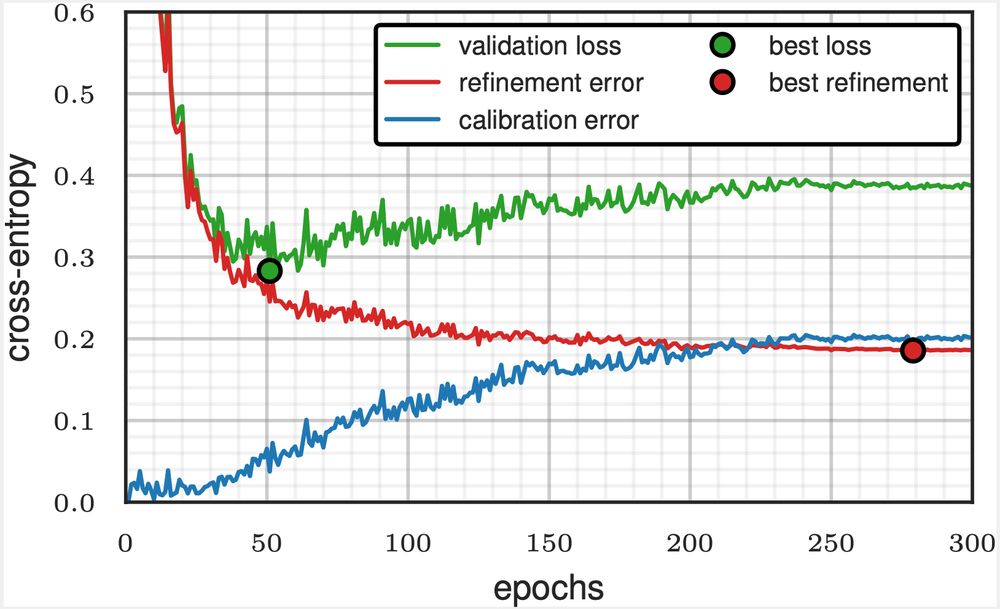
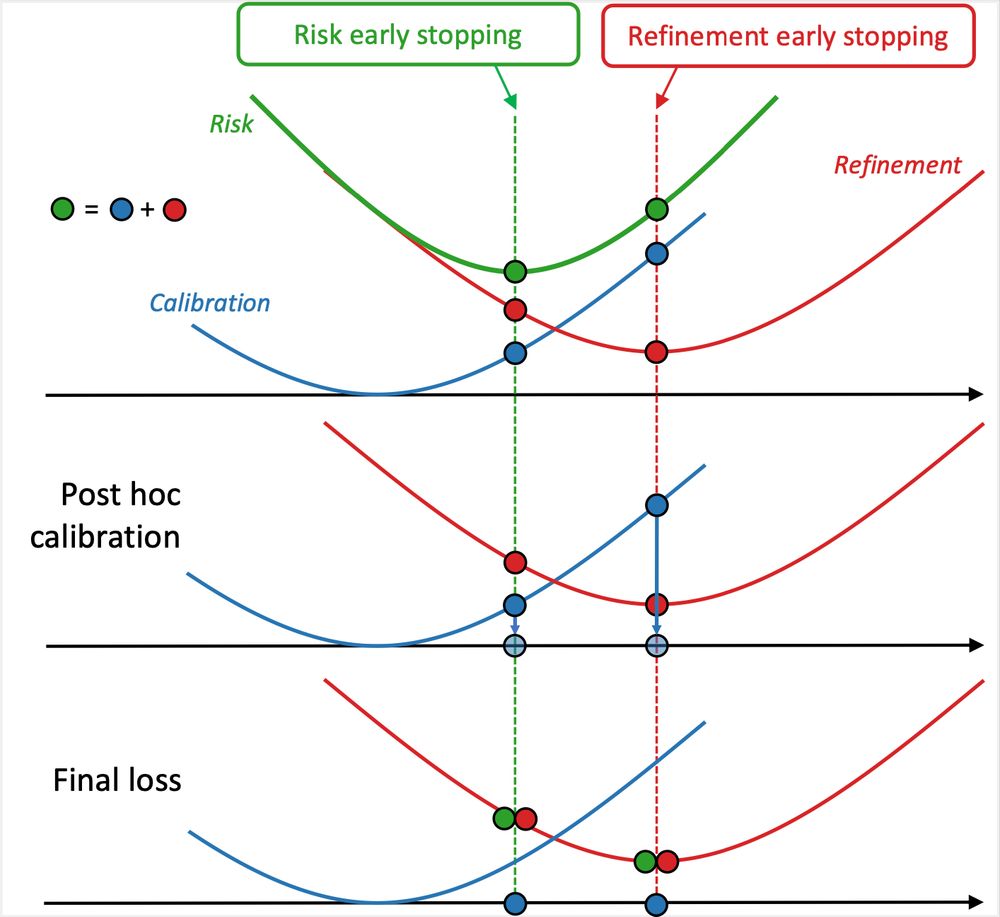
Early stopping on validation loss? This leads to suboptimal calibration and refinement errors—but you can do better!
With @dholzmueller.bsky.social, Michael I. Jordan, and @bachfrancis.bsky.social, we propose a method that integrates with any model and boosts classification performance across tasks.

Excited to see Sigmoid Attention accepted at ICLR 2025 !!
Make attention ~18% faster with a drop-in replacement 🚀
Code:
github.com/apple/ml-sig...
Paper
arxiv.org/abs/2409.04431
Conventional wisdom in ML is that the computation of full Jacobians and Hessians should be avoided. Instead, practitioners are advised to compute matrix-vector products, which are more in line with the inner workings of automatic differentiation (AD) backends such as PyTorch and JAX.
30.01.2025 14:32 — 👍 9 🔁 1 💬 1 📌 0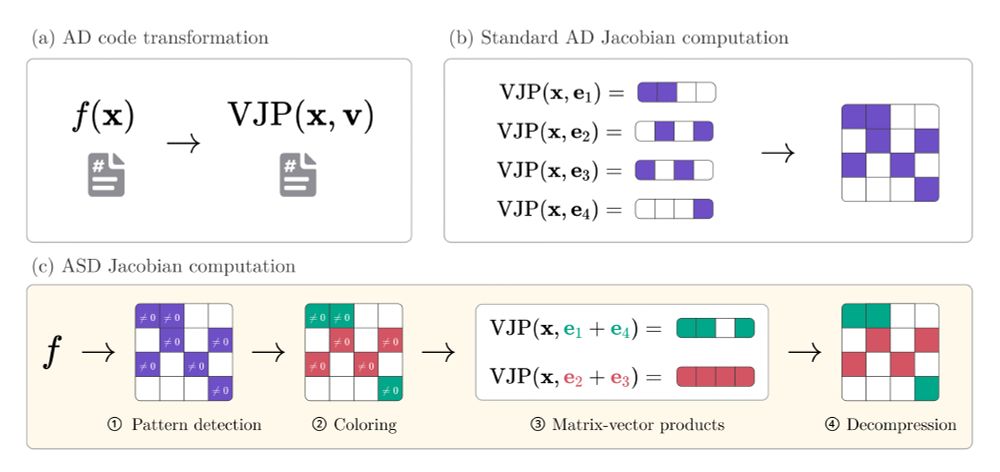
Figure comparing automatic differentiation (AD) and automatic sparse differentiation (ASD). (a) Given a function f, AD backends return a function computing vector-Jacobian products (VJPs). (b) Standard AD computes Jacobians row-by-row by evaluating VJPs with all standard basis vectors. (c) ASD reduces the number of VJP evaluations by first detecting a sparsity pattern of non-zero values, coloring orthogonal rows in the pattern and simultaneously evaluating VJPs of orthogonal rows. The concepts shown in this figure directly translate to forward-mode, which computes Jacobians column-by-column instead of row-by-row.
You think Jacobian and Hessian matrices are prohibitively expensive to compute on your problem? Our latest preprint with @gdalle.bsky.social might change your mind!
arxiv.org/abs/2501.17737
🧵1/8
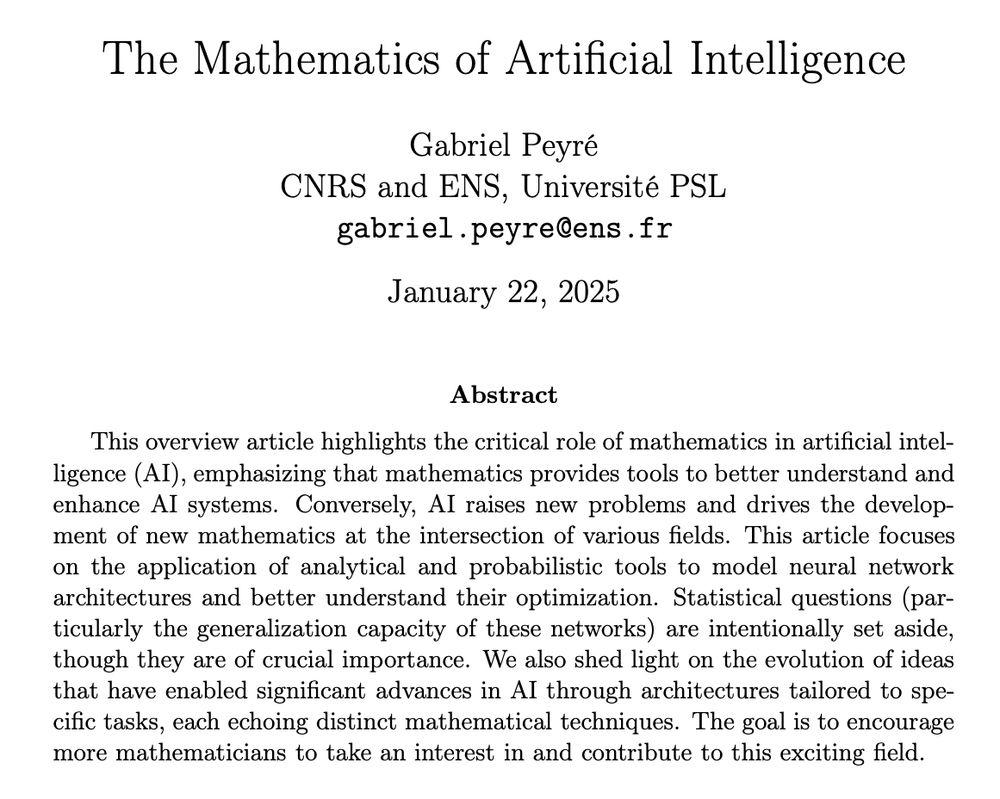
The Mathematics of Artificial Intelligence: In this introductory and highly subjective survey, aimed at a general mathematical audience, I showcase some key theoretical concepts underlying recent advancements in machine learning. arxiv.org/abs/2501.10465
22.01.2025 09:11 — 👍 140 🔁 40 💬 2 📌 1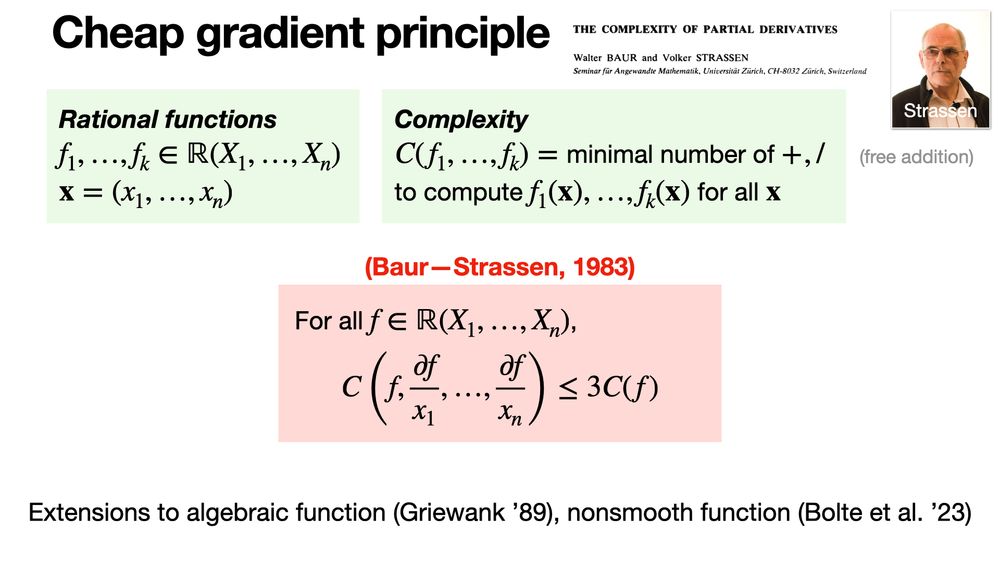
The Cheap Gradient Principle (Baur—Strassen, 1983) states that computing gradients via automatic differentiation is efficient: the gradient of a function f can be obtained with a cost proportional to evaluating f
16.01.2025 06:00 — 👍 33 🔁 2 💬 2 📌 1The Marchenko–Pastur law describes the limiting spectral distribution of eigenvalues of large random covariance matrices. The theorem proves that as dimensions grow, the empirical spectral distribution converges weakly to this law. https://buff.ly/406Xaxg
22.01.2025 06:00 — 👍 13 🔁 3 💬 0 📌 0⭐️⭐️ Internship positions ⭐️⭐️
1) NLP and predictive ML to improve the management of stroke, in a multi-disciplinary and stimulating environment under the joint supervision of @adrien3000 from the @TeamHeka, me from @soda_INRIA and Eric Jouvent from @APHP team.inria.fr/soda/files/...
When optimization problems have multiple minima, algorithms favor specific solutions due to their implicit bias. For ordinary least squares (OLS), gradient descent inherently converges to the minimal norm solution among all possible solutions. https://fa.bianp.net/blog/2022/implicit-bias-regression/
19.12.2024 06:00 — 👍 24 🔁 5 💬 2 📌 0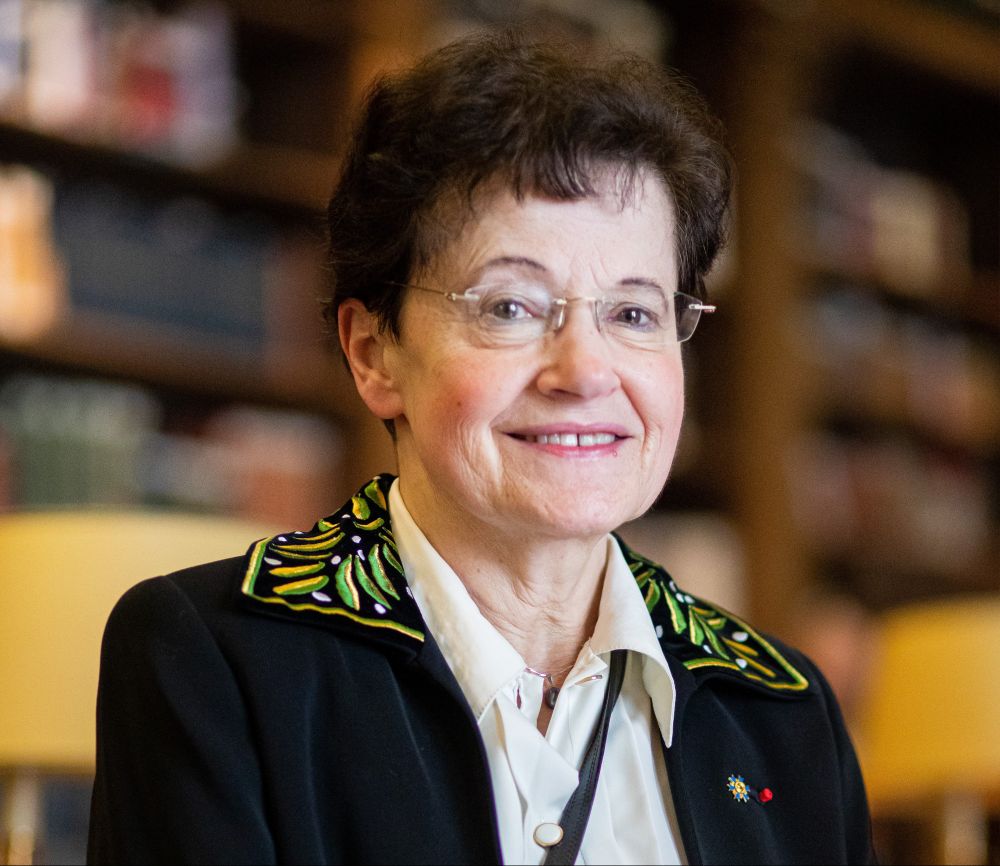
[NOUVELLE PRESIDENTE A L'ACADEMIE DES SCIENCES]
Françoise Combes élue présidente pour 2025-2026. Elle succède à Alain Fischer et devient la 2e femme à présider cette illustre institution, après Marianne Grunberg-Manago.
@combesfrancoise.bsky.social
@collegedefrance.bsky.social
Automatic differentiation in forward mode computes derivatives by breaking down functions into elem operations and propagating derivatives alongside values. It’s efficient for functions with fewer inputs than outputs and for Jacobian-vect prod, using for instance dual numbers.
13.12.2024 06:00 — 👍 37 🔁 10 💬 2 📌 0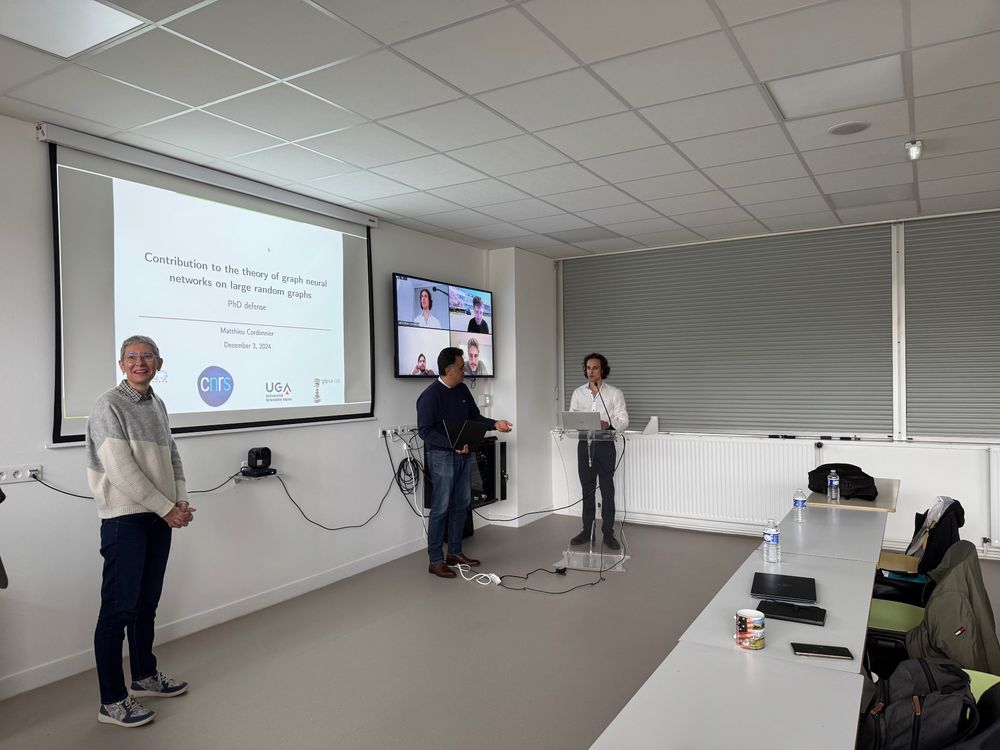
Congratulations to Dr. Matthieu Cordonnier for his thesis on convergence properties of large random graph supervised by N. Tremblay, @nicolaskeriven.bsky.social and myself. Matthieu is on the job market now for a postdoc, feel free to reach him!
03.12.2024 12:45 — 👍 7 🔁 2 💬 0 📌 0
Glad to announce that our work "Mirror and Preconditioned Gradient Descent in Wasserstein Space" was accepted at #NeurIPS2024 as a spotlight!
This is a joint work with the amazing T. Uscidda, A. David, P.C. Aubin-Frankowski and A. Korba!
Link: arxiv.org/abs/2406.08938
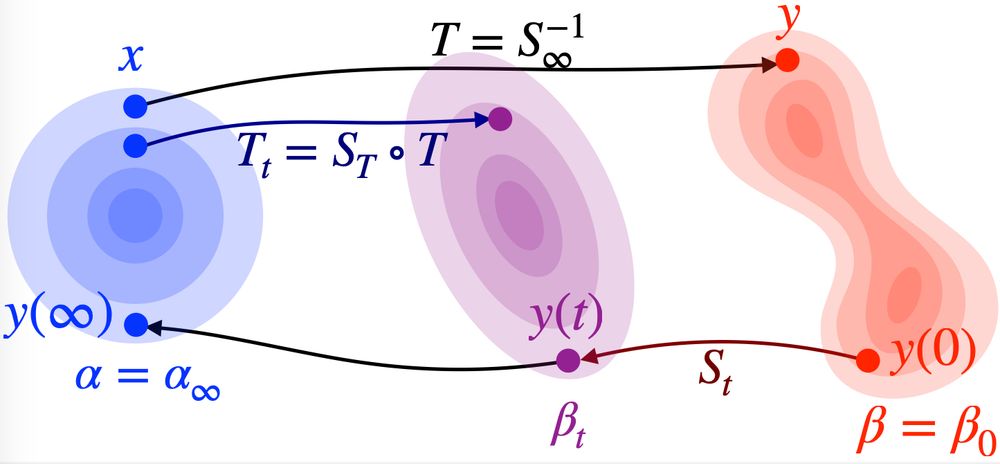
I wrote a summary of the main ingredients of the neat proof by Hugo Lavenant that diffusion models do not generally define optimal transport. github.com/mathematical...
30.11.2024 08:35 — 👍 241 🔁 45 💬 6 📌 5